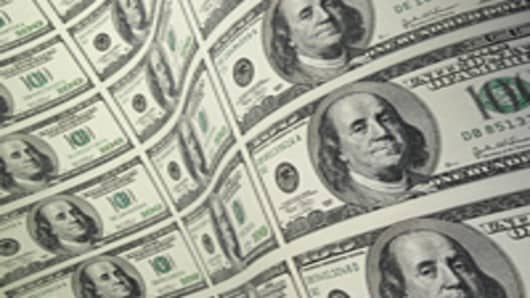The federal government has had to halt production of new high-tech $100 bills due to a significant flaw in the production process. At the height of the problem, as much as 30 percent of the new bills were flawed.
The bills, which are the first $100 bills to be signed by Treasury Secretary Tim Geithner, total $110 billion—or more than 10 percent of the supply of US currency.
You can insert your own joke about the Fed, government printing presses and hyper-inflation here. For now the bills are being quarantined in huge vaults in Fort Worth and Washington, DC while the government attempts to sort out the flawed bills from the usable bills.
CNBC's Eamon Javers broke the news:
An official familiar with the situation told CNBC that 1.1 billion of the new bills have been printed, but they are unusable because of a creasing problem in which paper folds over during production, revealing a blank unlinked portion of the bill face.
A second person familiar with the situation said that at the height of the problem, as many as 30 percent of the bills rolling off the printing press included the flaw, leading to the production shut down.
The total face value of the unusable bills, $110 billion, represents more than ten percent of the entire supply of US currency on the planet, which a government source said is $930 billion in banknotes. For now, the unusable bills are stored in the vaults in "cash packs" of four bundles of 4,000 each, with each pack containing 16,000 bills.
Officials don’t know exactly what caused the problem. "There is something drastically wrong here," a person familiar with the situation said. "The frustration level is off the charts."
Because officials don’t know how many of the 1.1 billion bills include the flaw, they have to hold them in the massive vaults until they are able to develop a mechanized system that can sort out the usable bills from the defects.
Sorting such a huge quantity of bills by hand, the officials estimate, could take between 20 and 30 years. Using a mechanized system, they think they could sort the massive pile of bills, each of which features the familiar image of Benjamin Franklin on the face, in about one year.
____________________________________________________
Questions? Comments? Email us atNetNet@cnbc.com
Follow John on Twitter @ twitter.com/Carney
Follow NetNet on Twitter @ twitter.com/CNBCnetnet
Facebook us @ www.facebook.com/NetNetCNBC



